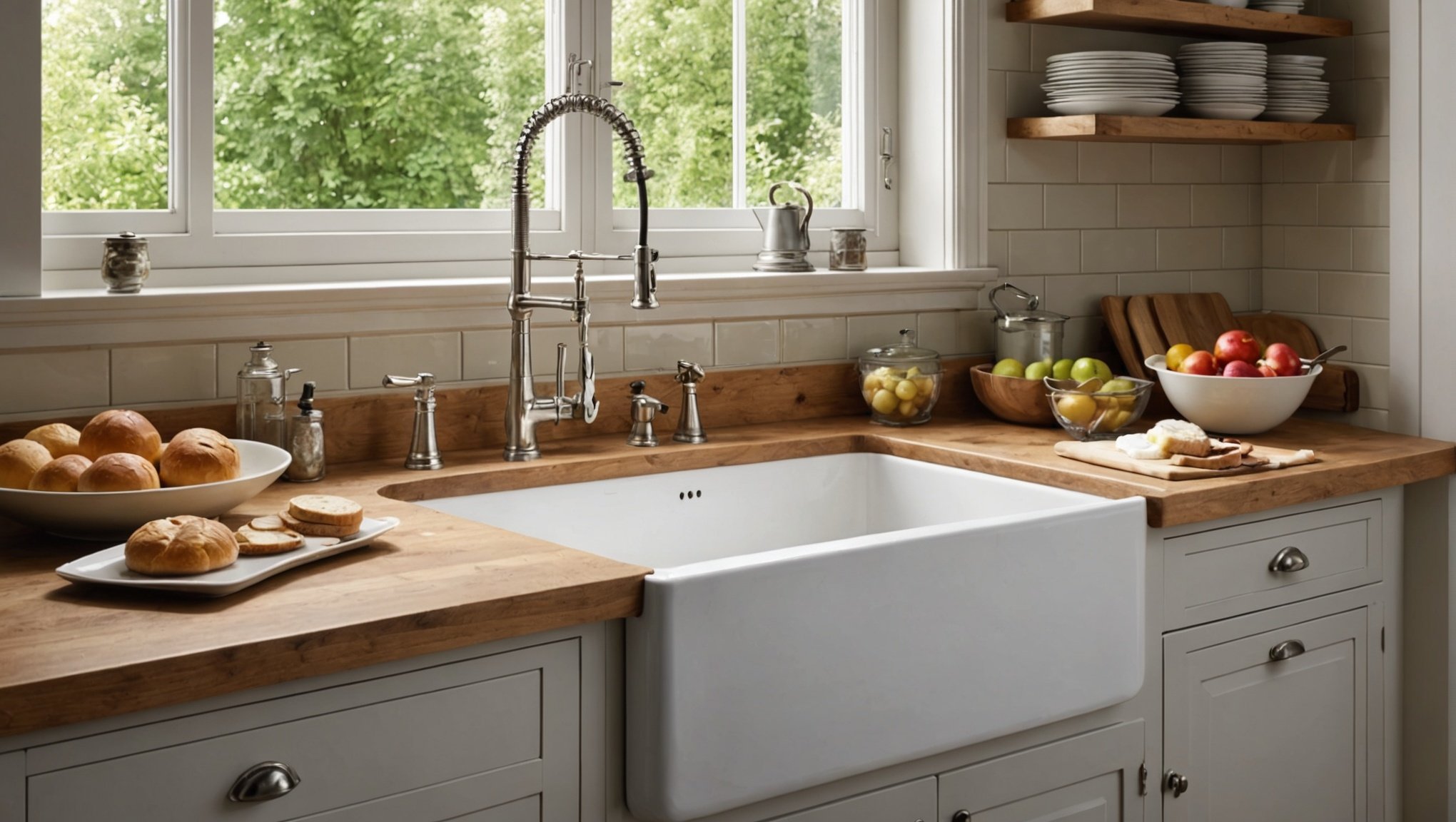A sink is often considered a cornerstone of any kitchen. It is where we wash our hands, rinse vegetables, scrub dishes, and even fill our kettles for that much-needed cup of coffee. However, for bakers, the sink takes on an even more crucial role. It is where they clean their tools, soak their baking pans, and often, mix their ingredients. Therefore, selecting the right kitchen sink is paramount for bakers. In this article, we will explore different sink designs, sizes, and installation methods to help you determine what type of sink would best serve a baker’s needs.
The Single Bowl Versus the Double Bowl Debate
For many homeowners, one of the first decisions to make when choosing a sink is whether to go for a single bowl or a double bowl. A single bowl sink provides one large space for washing and cleaning. Such a sink can comfortably accommodate large baking trays, sheet pans, and mixers. The size of a single bowl sink makes it a preferred choice for many bakers.
On the other hand, a double bowl sink offers more flexibility. One bowl can be used for washing while the other can be used for rinsing or soaking. This separation can help streamline the baking process, especially during large baking projects.
Consider the Size of the Sink
When it comes to kitchen sinks, size does matter. A large sink can be a lifesaver for bakers, offering ample space to clean large bowls and pans. However, the size of the sink should also fit harmoniously within the overall kitchen layout.
A small sink may make the room feel more spacious, but it might be impractical for a baker’s needs. On the other hand, a sink that is too large can take up valuable counter space that could be used for preparation and storage.
Choose the Right Design and Material
The choice of design and material for a kitchen sink can greatly impact its functionality and aesthetic appeal. For bakers, a deeper sink can be more practical as it can accommodate larger pots and pans. Materials such as stainless steel or granite composite are durable and easy to clean, making them ideal for heavy use.
One of the popular designs among bakers is the farmhouse sink. With a deep, wide basin and a distinctive apron-front design, a farmhouse sink offers ample space for washing and soaking. Its unique style can also add a touch of elegance to your kitchen.
Optimize Your Sink Installation
The installation of the sink is another factor to consider. There are three main types of sink installations: top-mount, undermount, and integral. Top-mount sinks, also known as drop-in sinks, are installed from above the countertop. They are easier to install and relatively inexpensive but may not provide the neatest finish.
Undermount sinks are installed from beneath the counter, providing a seamless look and making it easier to wipe crumbs and spills directly into the sink. An integral sink, on the other hand, is made from the same material as the countertop, delivering a sleek and unified look.
Maximizing Storage and Space
Given the vast amount of tools, pans, and ingredients bakers use, having ample storage and space is essential. When planning your kitchen, consider integrating storage solutions such as cabinets and vanities around your sink area. This can help keep your baking tools and ingredients within easy reach.
Pull-out or tilt-out drawers can be added beneath the sink for additional storage. Also, consider installing a pull-down faucet with a high arc, which can add extra room for filling or cleaning large pots and pans.
Remember, a well-planned kitchen design can significantly enhance your baking experience. Therefore, it’s crucial to consider the type, size, and installation of the sink, as well as how it fits within your overall kitchen layout. By doing so, you can create a functional and efficient baking haven.
Integrating the Sink with Other Kitchen Components
It’s all well and good to select the perfect kitchen sink for a baker’s needs, but it’s equally important to ensure that the sink integrates seamlessly with the rest of your kitchen design. This includes considering how the sink aligns with your kitchen appliances, the countertop, and the kitchen dining area.
For example, if a baker frequently uses large appliances such as mixers and blenders, the sink should ideally be placed near a power source to facilitate easy access. The distance between the sink and the stove should also be minimal to make the transfer of pots and pans more efficient.
In terms of aesthetics, the style and color of the sink should complement the entire kitchen décor, including the cabinetry, the backsplash, and the outdoor lighting. This will make the kitchen not only functional but also visually appealing. Materials such as stainless steel can work well with a wide range of kitchen styles from modern to traditional.
It’s also essential to ensure that the sink is in harmony with the bathroom vanity or bathroom vanities in your home. This will create a cohesive look and feel throughout your living space.
Remember that the best kitchen design is one that is tailor-made to suit your baking needs while also being aesthetically pleasing. Consult with experienced general contractors to help you make informed decisions about your kitchen layout.
Seeking Professional Advice and Assistance
While it might be tempting to select and install your kitchen sink independently, consulting with a professional can save you time and costly mistakes. General contractors or kitchen design specialists can provide valuable insights into the most suitable sink type, size, and installation method for your kitchen.
They can help you understand the nuances of different sink designs, such as the single bowl or double bowl sink, and the benefits they offer to a baker. Moreover, they can give advice on the ideal placement of your sink in relation to your appliances, counters, and outdoor lighting to optimize your kitchen’s functionality.
These professionals can also help you navigate the numerous choices in materials, from the durability of stainless steel to the aesthetic appeal of granite composite. Their expertise can help determine what would work best in your kitchen, taking into account your personal baking needs and style preferences.
Finally, professional installation can ensure your sink is fitted securely and correctly. This can save you time and frustration and help avoid issues down the line with leaks or damage.
Remember, the sink is often the heart of the kitchen, especially for a baker. Therefore, it’s worth investing time into making the right choice and seeking professional advice to ensure your sink enhances your love for baking.
Conclusion
In conclusion, choosing the right kitchen sink for a baker’s kitchen requires careful consideration of various factors. It’s not just about picking a sink; it’s about creating a workspace that enhances your baking experience. The sink should be large enough to accommodate baking tools and pans, yet it should integrate seamlessly with the overall kitchen design.
Whether you choose a single bowl or a double bowl sink, it’s important to ensure that it’s made of durable material like stainless steel that’s easy to clean. Also, optimizing your sink installation can add to your kitchen’s aesthetic appeal, be it a top-mount, undermount, or integral installation.
Remember, while personal preference plays a significant role, professional advice can be invaluable. General contractors or kitchen design specialists can guide you through your choices and assist with installation, helping you create a kitchen that’s not just a place for baking, but a haven where your culinary creativity can truly shine.






